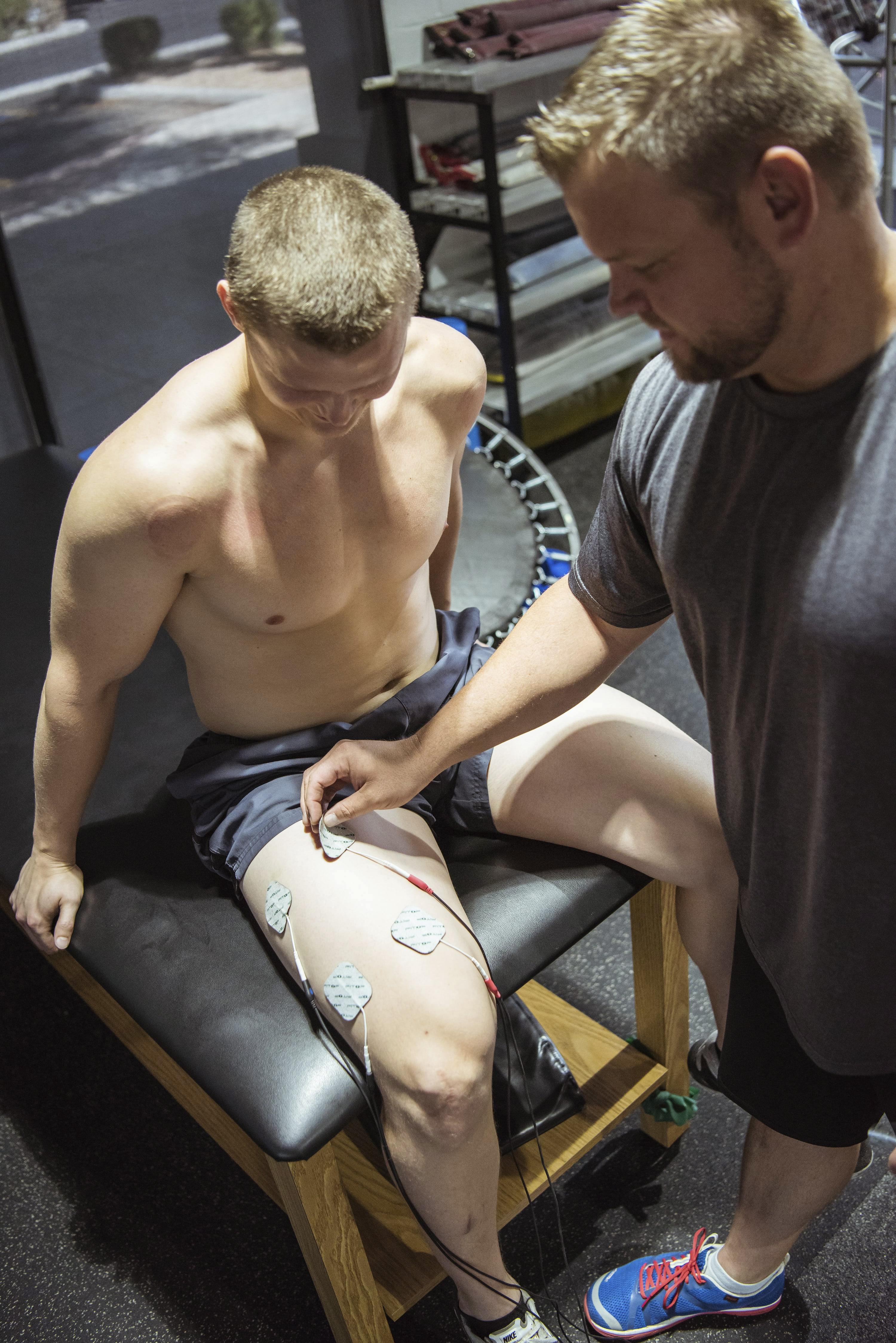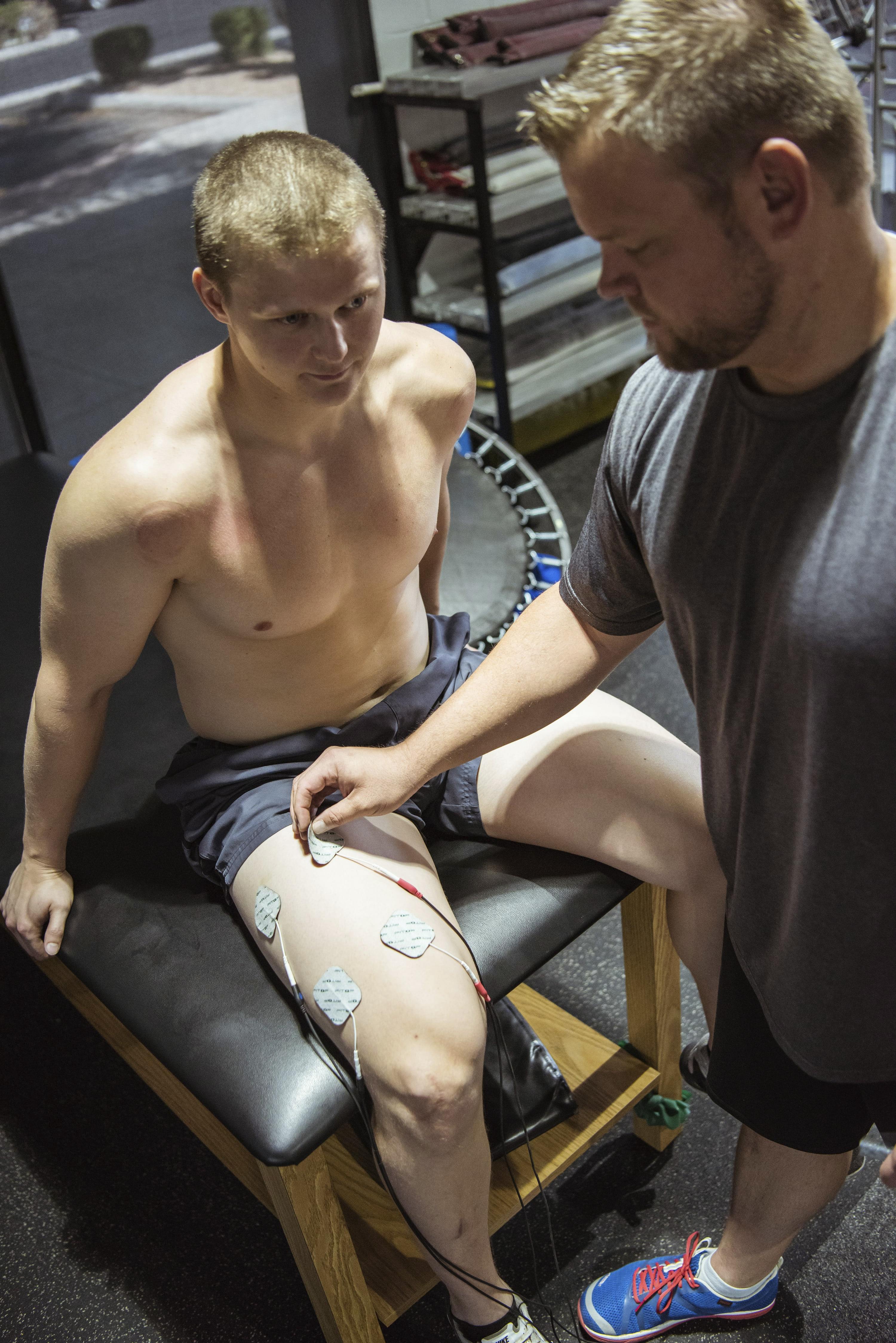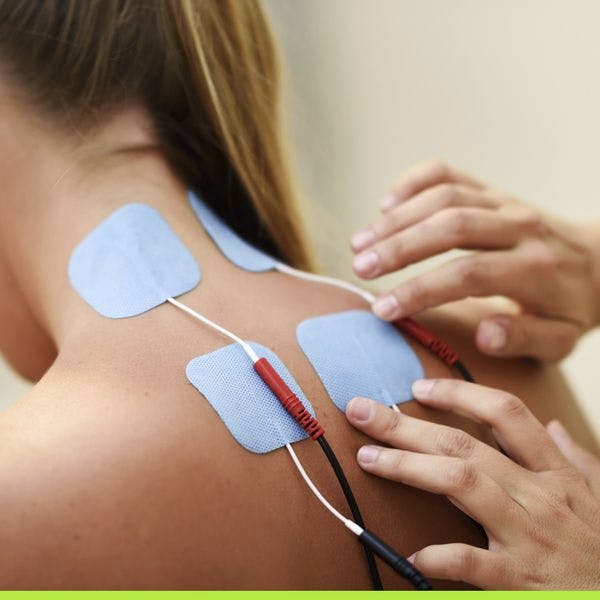-
Compex Electrical Muscle Stimulation can be used for Strength, Conditioning, Promoting muscle recruitment, and Recovery from sport. It has been shown to: ▪ Increased Muscle Strength and Density & Improved (VO2) Max: recruits more muscle fibers to maximize your muscular effort, engages a greater percentage of muscle fibers-both Type 1 slow twitch muscle (endurance) and Type 2 fast twitch muscle (power and explosiveness), creates more muscular efficiency with enhanced results. Faster Muscle Recovery: helps to bring fresh oxygen and nutrients to the muscles and facilitates the flushing of toxins and byproducts to promote faster muscle recovery.
Dr. Warren has been at the forefront of the use of EMS, with his research and publications on the use of EMS to improve sports performance and reduce injuries during sports.
Effects of Three Recovery Protocols on Range of Motion, Heart Rate, Rating of Perceived Exertion, and Blood Lactate in Baseball Pitchers During a Simulated Game.
Courtney D Warren, David J Szymanski, Merrill R Landers
Strength Cond Res 2015 Nov;29(11):3016-25
Effect of 3 different between-inning recovery methods on baseball pitching performance.
Warren, CD, Brown, LE, Landers, MR, and Stahura, KA.
Journal of Strength & Conditioning Research:
March 2011 – Volume 25 – Issue 3 – pp 683-688
For more information, contact our team of physical therapist at Mesa, AZ center.
-

WHAT IS ELECTRICAL STIMULATION?
While it may sound a bit intimidating, electrical stimulation really isn’t at all! When used correctly and provided under the guidance of a licensed and skilled physical therapist, electrical stimulation is a safe and productive modality that can be used to treat a variety of conditions.
While individual units and delivery modes can vary, the standard electrical stimulation device utilizes self-adhesive electrodes placed around the target treatment area on the body. These electrodes are connected via wire leads to the unit, through which electricity can pass and ultimately interact with sensory and/or motor nerves (depending on the type of current utilized).
WHAT IS ELECTRICAL STIMULATION USED FOR IN PHYSICAL THERAPY?
Several electrical stimulation modes use different types of currents intended to stimulate different nerves in various specific ways. These include modes such as transcutaneous electrical nerve stimulation (TENS), interferential, pre-modulated, Russian, and symmetrical or asymmetrical bi-phasic. Don’t let the words confuse you, though. Your physical therapist will decide on the right one to meet your unique needs.

Our clinic frequently utilizes electrical stimulation in order to provide a variety of beneficial healing effects, including:- Reduce, eliminate, and/or control pain (both acute and chronic)
- Increase local circulation
- Decrease swelling
- Improve range of motion
- Reduce muscle spasm
- Provide biofeedback (aka improve body awareness)
- Improve motor coordination
- Provide neuromuscular re-education
- Prevent or reverse muscle atrophy (especially after prolonged immobilization, such as a limb being cast as a fracture heals)
Pain control and reduction is probably the most frequent indication of electrical stimulation usage. Specifically, this modality can trigger an innate and completely natural analgesic effect by stimulating specific sensory nerve fibers (including A-beta, A-delta, and C fibers), which both disrupt or decrease the sensation of pain and also elicit the release of certain neurotransmitters which can prolong the pain-relieving effects.
While it’s not for everyone (including people with deep vein thrombosis, people who are pregnant, people with pacemakers, and people with impaired cognition) or safe to use on every body area (including on the anterior neck, eyes, or over areas with damaged skin or decreased sensation), electrical stimulation can be used for a wide variety of conditions as indicated, including acute sports-related or auto accident-related injuries, repetitive stress injuries, muscle strains, ligament sprains, and even neurological conditions including stroke.

DOES ELECTRICAL MUSCLE STIMULATION HURT?
No!
The intensity of the electrical muscle stimulation or sensory nerve stimulation is easily adjustable and ultimately will only be as much as you, the patient, can tolerate. Typically, electrical stimulation will feel tingly or prickly (some patients describe it as a comforting “pins and needles” sensation). Sometimes, as in the case when used for muscle strengthening, the intensity level can be high and somewhat uncomfortable, but it should never cause pain.
WHAT SHOULD I EXPECT DURING AN ELECTRICAL STIMULATION SESSION?
Our patients’ comfort, safety, and dignity are the number one priority. For this reason, we’ll ask you to come in comfortable, loose-fitting clothes and sturdy shoes when you come to see us for an appointment.
At your initial consultation, expect to be taken through a thorough patient history questionnaire (we’ll ask questions about your current, past, and family medical history) and physical examination. Your physical therapist will be able to diagnose your condition and then devise an appropriate treatment plan to meet your unique needs.
If your physical therapist decides that electrical stimulation is an appropriate part of your plan of care, he or she will first educate you about the specific modality. You’ll be asked to sit or lie in a comfortable position, your skin in the target treatment area will be cleaned and prepped, and your PT will guide you step-by-step through the entire treatment.
EXPECT GREAT RESULTS!
Are you interested in trying electrical stimulation? Wondering if it can help your pain or dysfunction? Our physical therapy services, including electrical stimulation and other modalities, are evidenced-based, state-of-the-art, effective, and have minimal to no risk of side effects. Contact us at Mesa, AZ center and come experience the difference electrical stimulation can make in your life.
